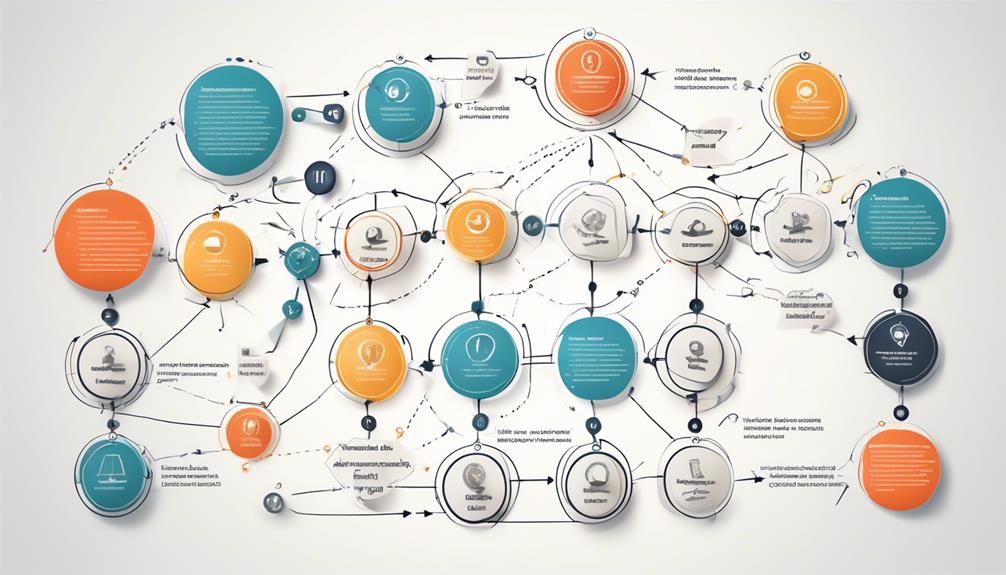Predictive risk scoring with machine learning helps you identify potential risks early by analyzing high-quality, relevant data. It relies on transparent and accurate models that reveal why certain scores are assigned, giving you confidence in your decisions. Good data quality is key—errors and inconsistencies can cloud results. By understanding how these models work and ensuring your data is clean, you can make smarter, faster risk management choices. Keep exploring to learn more about optimizing your risk strategies.
Key Takeaways
- Machine learning models analyze diverse data to generate accurate risk scores for individual assessments.
- Ensuring data quality and interpretability enhances model trust and facilitates regulatory compliance.
- Feature contributions reveal key factors influencing risk predictions, aiding transparency and decision-making.
- Combining high-quality data with interpretable models enables early risk detection and proactive management.
- Continuous model validation and updates adapt risk scoring to evolving data and emerging threats.

Have you ever wondered how organizations identify potential risks before they cause real problems? It all starts with predictive risk scoring, a process that leverages machine learning to evaluate the likelihood of future adverse events. But for these models to be truly effective, several critical factors come into play. One of the most important aspects is model interpretability. When you’re working with complex algorithms, it’s vital that you can understand how the model arrives at its predictions. If you can’t interpret the model’s reasoning, you’ll struggle to trust its insights or explain them to stakeholders. This is especially crucial in regulated industries like finance or healthcare, where transparency isn’t just preferred but often required. An interpretable model allows you to see which features—such as customer behavior, transaction history, or demographic data—contribute most to risk predictions. This understanding helps you fine-tune the model, identify biases, and improve its accuracy over time. Additionally, model interpretability facilitates compliance with industry standards and legal requirements, ensuring your risk assessment process remains transparent and accountable.
Equally important is data quality. You need reliable, accurate, and relevant data to fuel your machine learning models. Garbage in, garbage out, as the saying goes. If your data contains errors, missing values, or inconsistencies, your risk scores will be skewed, leading to false positives or overlooked threats. Ensuring data quality involves cleaning, validating, and normalizing your datasets before feeding them into your models. This step might seem tedious, but it’s worth the effort; high-quality data results in more precise predictions and better decision-making. When your data is trustworthy, your risk scoring becomes more dependable, allowing you to proactively address issues before they escalate.
Combining model interpretability and data quality creates a powerful foundation for predictive risk scoring. You can confidently rely on your models to flag potential risks early, while also understanding the factors behind each prediction. This clarity enables you to communicate insights effectively across your organization, fostering a proactive risk management culture. Ultimately, this approach helps you allocate resources efficiently, prioritize risk mitigation strategies, and stay ahead of emerging threats. As machine learning continues to evolve, focusing on these core principles ensures your risk scoring system is not just accurate, but also transparent and trustworthy—key ingredients for making smarter, faster decisions in a complex world.
Frequently Asked Questions
How Accurate Are Machine Learning Models in Risk Prediction?
You wonder about how accurate machine learning models are in risk prediction. Their accuracy can be high, but it depends on factors like model interpretability and algorithm bias. If models lack interpretability, you might struggle to trust predictions. Algorithm bias can also skew results, reducing reliability. While advancements improve accuracy, you should always evaluate these factors to guarantee predictions genuinely reflect real risks, especially in critical decision-making.
What Are Common Challenges in Implementing Predictive Risk Scoring?
When implementing predictive risk scoring, you often face challenges like ensuring model interpretability, so stakeholders understand how decisions are made. Regulatory compliance is also critical, requiring transparent processes and data privacy measures. Balancing model complexity with explainability can be tough, but it’s essential for trust and legal adherence. You need to address these issues early to build reliable, compliant risk scoring systems that effectively support decision-making.
How Does Data Quality Affect Risk Scoring Outcomes?
Did you know that poor data quality can decrease model accuracy by up to 50%? When your data lacks completeness, important risk indicators might be missing, leading to inaccurate scores. Inconsistent data can cause conflicting insights, skewing results. You need clean, complete, and consistent data to guarantee reliable risk scoring outcomes. Otherwise, you risk making decisions based on flawed insights, which could have serious consequences for your organization.
Can Predictive Risk Scoring Adapt to New Data Trends?
You wonder if predictive risk scoring can adjust to new data trends. Yes, it can, especially when you implement model updating strategies. Regularly updating your model allows it to learn from fresh data, improving trend adaptation. This ensures your risk scores remain accurate and relevant over time. Without ongoing model updates, your system might lag behind evolving patterns, reducing its effectiveness in predicting risks accurately.
What Industries Most Benefit From Machine Learning Risk Models?
You’re asking which industries benefit most from machine learning risk models, and the answer is clear: those with industry-specific applications and strict regulatory compliance needs. Financial services, healthcare, and insurance leverage these models to predict fraud, patient risks, or claims, helping them stay ahead of the curve. With machine learning, you can turn data into insights, making risk management smarter and more efficient—truly hitting two birds with one stone.
Conclusion
By harnessing machine learning for predictive risk scoring, you open the power to anticipate challenges before they occur. While traditional methods rely on static data, machine learning adapts and evolves, offering real-time insights. It’s like having a crystal ball in your hands—predicting future risks with precision. Embrace this technology, and you’ll not only stay one step ahead but also turn uncertainty into opportunity, transforming risks into strategic advantages.








